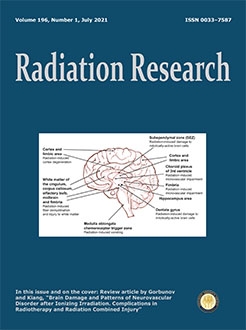The growing risk of accidental radiation exposure due to increased usage of ionizing radiation, such as in nuclear power, industries and medicine, has increased the necessity for the development of radiation countermeasures. Previously, we demonstrated the therapeutic potential of the acetylated diacylglycerol, 1-palmitoyl-2-linoleoyl-3-acetyl-rac-glycerol (PLAG), as a radiation countermeasure by mitigating radiation-associated mortality and hematopoietic acute radiation syndrome (H-ARS) in BALB/c mice after a lethal dose (LD70/30) of gamma-ray total-body irradiation (TBI). In this study, we show that PLAG mitigates symptoms of H-ARS, as characterized by mature blood cell recovery and restoration of bone marrow cellularity, by regulating systemic inflammation. Log-rank test demonstrated that high levels of WBCs, lymphocytes and neutrophils on day 10 post-TBI resulted in significantly improved survival rate. PLAG significantly enhanced the nadir values of all major blood cell types as well as bone marrow cellularity. A single TBI at LD70/30 induced an immediate increase in the blood levels of CXCL1 (12.5 fold), CXCL2 (1.5 fold), IL-6 (86.9 fold), C-reactive protein (CRP; 1.3 fold) and G-CSF (15.7 fold) at 6 h post-TBI, but the cytokine levels returned to baseline level afterward. When the irradiated mice started to die around 15 days post-TBI, they exhibited a second surge in blood levels of CXCL1 (49.3 fold), CXCL2 (87.1 fold), IL-6 (208 fold), CRP (3.6 fold) and G-CSF (265.7 fold). However, PLAG-treated groups showed a significant decrease in these same blood levels (P < 0.001). Considering the inverse correlation between inflammatory cytokine levels and hematological nadirs, PLAG exerts its therapeutic effects on H-ARS by regulating inflammatory cytokine production. These data suggest that PLAG has high potential as a radiation countermeasure to mitigate H-ARS after accidental exposure to radiation.
BioOne.org will be down briefly for maintenance on 17 December 2024 between 18:00-22:00 Pacific Time US. We apologize for any inconvenience.
How to translate text using browser tools
29 April 2021
Mitigation of Hematopoietic Syndrome of Acute Radiation Syndrome by 1-Palmitoyl-2-linoleoyl-3-acetyl-rac-glycerol (PLAG) is Associated with Regulation of Systemic Inflammation in a Murine Model of Total-Body Irradiation
Yong-Jae Kim,
Jinseon Jeong,
Kaapjoo Park,
Ki-Young Sohn,
Sun Young Yoon,
Jae Wha Kim
ACCESS THE FULL ARTICLE

Radiation Research
Vol. 196 • No. 1
July 2021
Vol. 196 • No. 1
July 2021




